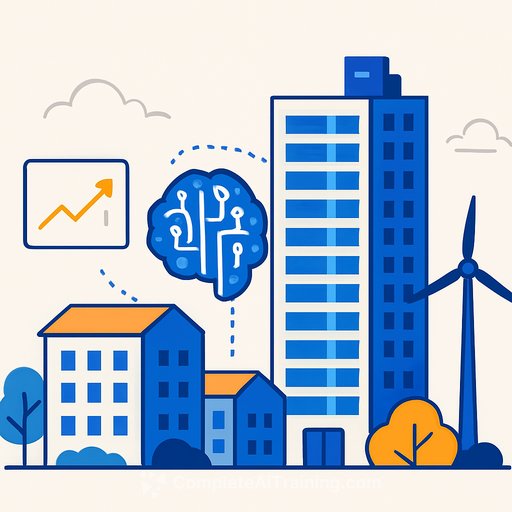The Hidden Engine: How AI Data Centers Are Propping Up the Economy
On the surface, the U.S. economy appears stable. But look closer, and you'll find the growth isn't coming from where you'd expect. The entire structure is being supported by a single, focused construction boom: AI data centers.
Recent analysis shows that while investments in AI-related equipment and software were just 4% of total GDP in the first half of 2025, they accounted for a staggering 92% of all economic growth. Without this spending, the economy would have grown by a mere 0.1%-a number that signals recession.
This isn't a broad-based recovery. It's a highly concentrated surge of capital into a specific type of building.
The $370 Billion Building Spree
Tech giants like Microsoft, Google, Meta, and Amazon are in an arms race, pouring nearly $370 billion into capital expenditures in 2025 alone. A huge portion of that money is going directly into servers, GPUs, and, most importantly for you, data center construction.
Goldman Sachs reports that U.S. data center construction hit a record $40 billion annualized rate this year. For the first time ever, the economic contribution from building these facilities outpaced all of U.S. consumer spending-which traditionally makes up 70% of the economy.
While other sectors like manufacturing and traditional real estate are declining, and retail and services are flat, data center construction is the only thing providing significant forward momentum.
The New Constraint: Power and Location
This boom has created a new critical bottleneck: electricity. The demand for power is rewriting the rules of site selection and project viability. What was once a simple calculation of land and fiber access is now a high-stakes search for available megawatts.
Global data center power demand is expected to more than double by 2030. In the U.S., this could raise household electricity bills by 8% on average and spike as high as 25% in development hotspots like Virginia. Wholesale electricity prices near existing data center clusters have already jumped dramatically.
This creates a two-sided reality. Grid delays and power shortages pose a real threat to project timelines and ROI. But it also creates immense opportunity for developers who can secure sites with guaranteed power or work with utilities on new infrastructure. A projected 36 GW power shortfall in the U.S. by 2028 means that energy, not land, is the new scarce resource.
Bubble Territory or a New Foundation?
The scale of this investment is drawing comparisons to the dot-com bubble. Current AI capital expenditure, relative to GDP, now exceeds that peak. Some analysts warn that the industry needs to generate $2 trillion in annual revenue by 2030 to justify the spending-a massive leap from today's ~$20 billion.
For those in construction, this presents a calculated risk. The demand is real and immediate, driving GDP numbers that you can see tracked by sources like the Atlanta Fed. However, the gains are not evenly distributed. These are "jobless recovery" projects; they require immense construction crews but few permanent employees, limiting their long-term economic spillover into local communities.
The entire AI infrastructure boom depends on a stable supply of power and components like electrical transformers, which are already facing supply chain issues. Elon Musk has pointed to this as a significant long-term risk.
Your Strategy Moving Forward
The data center boom is the primary force keeping the wider economy from contracting. For the real estate and construction industries, it's a generational opportunity, but one with unique and challenging constraints.
Success is no longer just about building. It's about navigating energy markets, anticipating grid capacity, and understanding the technological drivers behind the demand. The most successful firms will be those who can solve the power problem for their clients.
To capitalize on this shift, your expertise must extend beyond the physical build. Understanding the AI landscape is now a prerequisite for identifying the most durable opportunities. Staying current on the technology is as important as scouting the land.
You can find courses that break down these complex trends by industry role, helping you speak the language of your new biggest clients. Learn more about AI courses suited for your job to get ahead.
```Your membership also unlocks:






